What is it?
New topographics was a term made by William Jenkins in 1975 to describe a group of American photographers (such as Robert Adams and Lewis Baltz) whose pictures had a similar banal aesthetic, in that they were formal, mostly black and white prints of the urban landscape.
Many of the photographers associated with new topographics including Robert Adams, Lewis Baltz, Nicholas Nixon and Bernd and Hiller Becher, were inspired by the man-made, selecting subject matter that was matter-of-fact. Parking lots, suburban housing and warehouses were all depicted with a beautiful stark austerity, almost in the way early photographers documented the natural landscape. An exhibition at the International Museum of Photography in Rochester, New York featuring these photographers also revealed the growing unease about how the natural landscape was being eroded by industrial development.
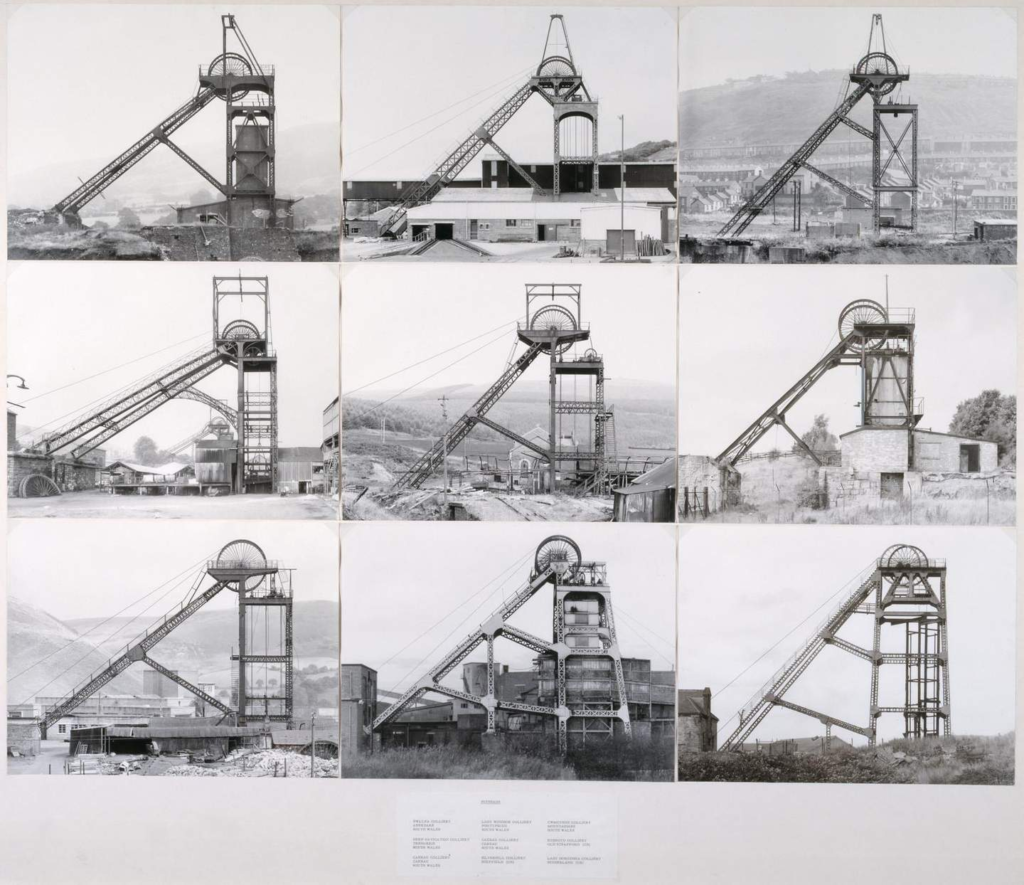
What were the new topographics a reaction to?
These stark, beautifully printed images of this mundane but oddly fascinating topography were both a reflection of the increasingly suburbanised world around everyone, and a reaction to the tyranny of idealised landscape photography that elevated the natural and the elemental.
Case Study – Robert Adams
Robert Adams, born in 1937, is a prominent American photographer renowned for his exploration of the evolving landscapes of the American West. His work gained significant recognition in the mid-1970s, particularly with the publication of his book, The New West, in 1974, and his involvement in the 1975 exhibition titled New Topographics: Photographs of a Man-Altered Landscape. Throughout his career, Adams has been awarded with two Guggenheim Fellowships, a MacArthur Fellowship, the Deutsche Börse Photography Prize, and the Hasselblad Award.
Critic Sean O’Hagan, writing in The Guardian about Adams’ work, said “his subject has been the American west: its vastness, its sparse beauty and its ecological fragility. [. . .] What he has photographed constantly – in varying shades of grey – is what has been lost and what remains” and that “his work’s other great subtext” is silence.
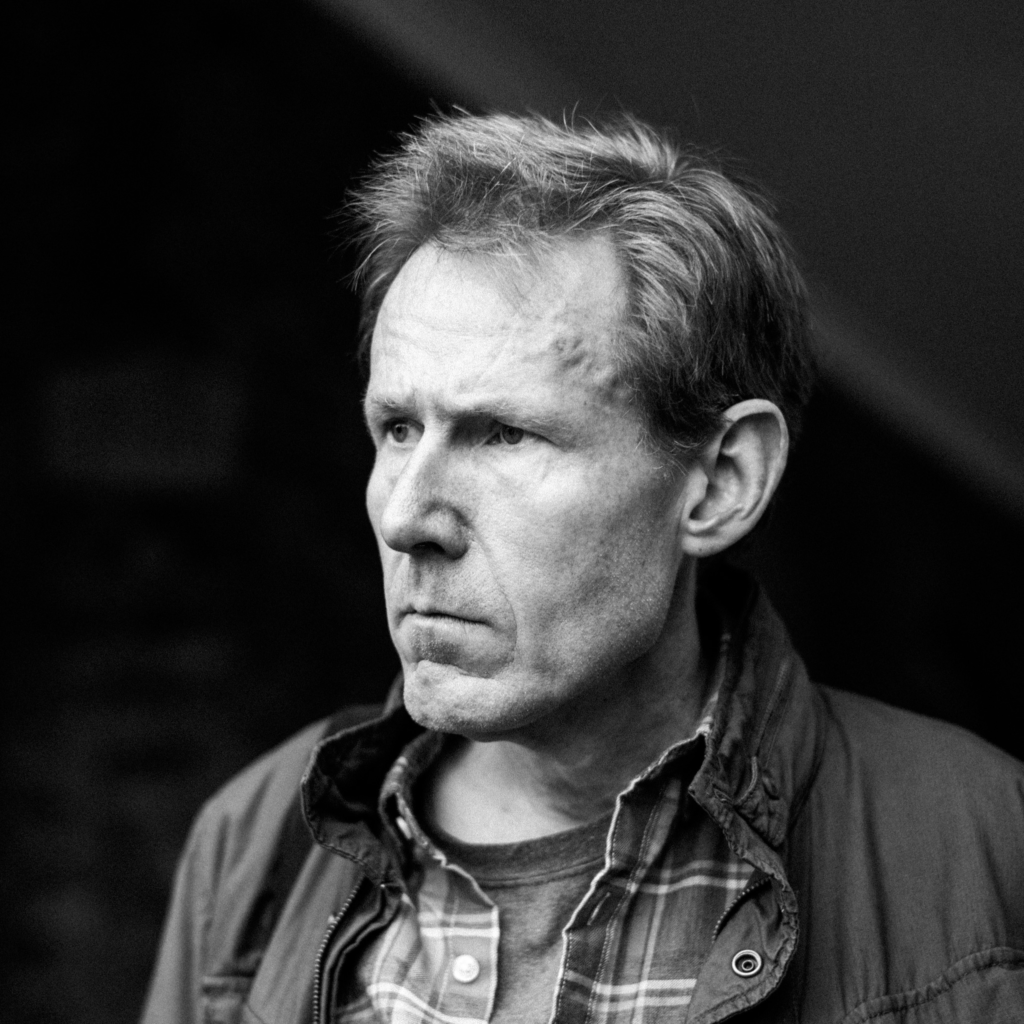
Image Analysis
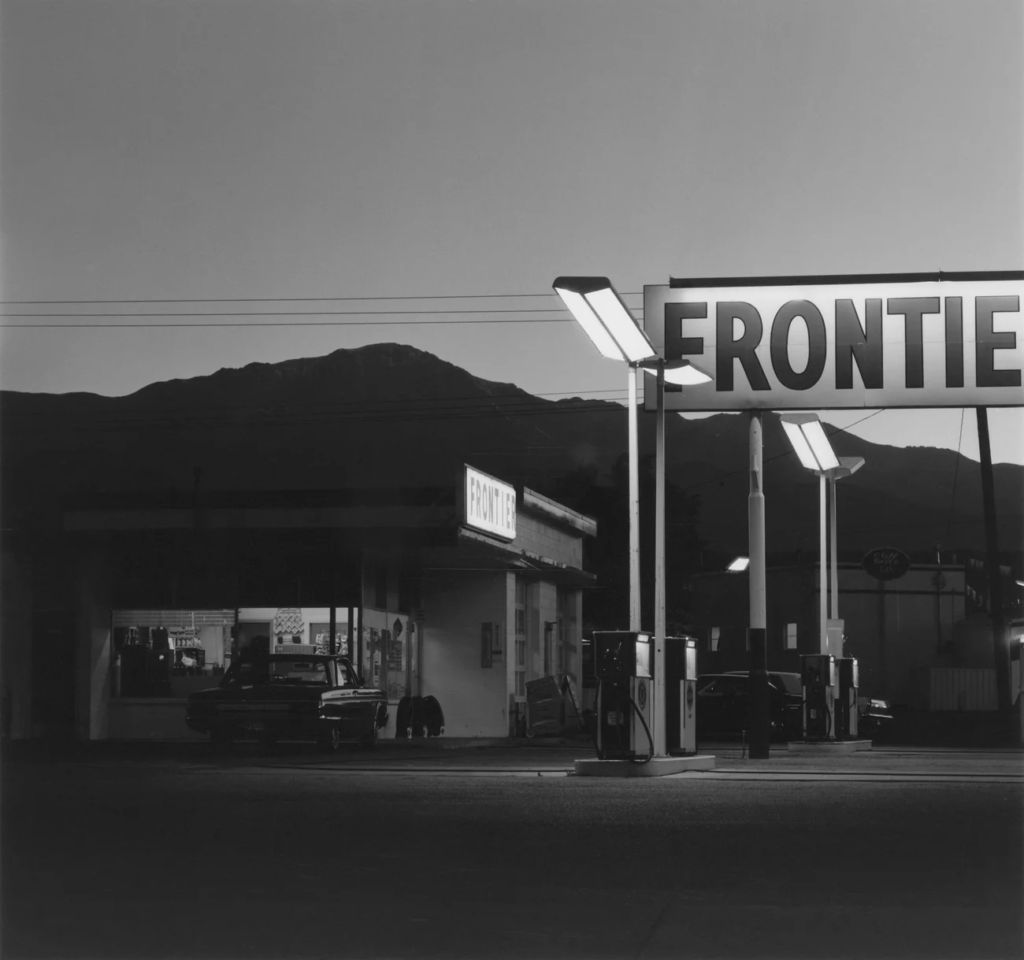
Technical – The picture shows a gas station on the frontier, presumably at darker hours which means the lighting for the image is coming mostly from the manmade lamps that are visible. All details in the foreground are clear and visible, meaning a high aperture value and deep depth of field were likely used – furthermore, there is little to none visual noise meaning ISO was kept to a minimal value such as 100.
Visual – The picture is completely lacking in colour being in black and white, which helps add to the bleakness of the image due to the gas station almost having invaded the landscape. There is also a clear contrast in light and dark tones, with the station in the foreground having more of an emphasis on lighter tones with the mountains in the background not being illuminated and therefore being darker. There is also a sense of depth and three dimensions with how the station has been positioned in the image, helping to create a sense of drama.
Contextual/Conceptual – Adams was part of The New Topograhics with a focus on manmade landscapes and their effect on natural ones, hence why the image focuses on a station which is taking away the focus and attention from the mountains placed farther away in the background.
Stephen Shore
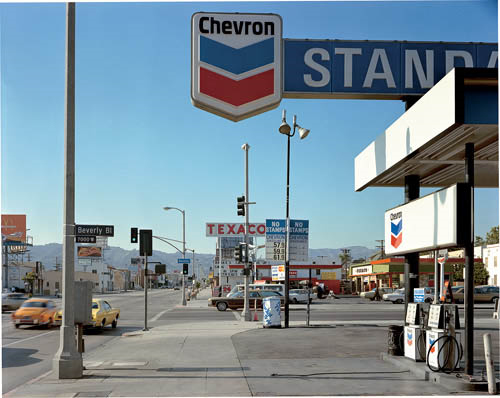
Key features:
- Foreground vs background | Dominant features
- Composition | low horizon line | Square format
- Perspective and detail / cluttering
- Wide depth of field | Large Format Camera
- Colour | impact and relevance
- Nationalism vs mobility vs isolation
- Social commentary | The American Dream?
- An appreciation of the formal elements : line, shape, form, texture, pattern, tone etc
Image analysis:
Technical – The image features natural light, likely taken in the most prominent hours of sunshine (~12pm) which casts distinct, hard-edged shadows on the pavement. It is also likely a high aperture was used since there is clear detail in all aspects of the image, even the mountains in the distance to an extent.
Visual – There is some alignment to the rule of thirds which the lamp posts, but the main visual feature of this image is the fact that most of the detail is cluttered in the bottom third with the two top thirds of the image being almost empty except from the sky and gas station sky, which when combined with the lines leading towards the mountains creates a contrast between this suburban area and the natural landscape off in the distance.
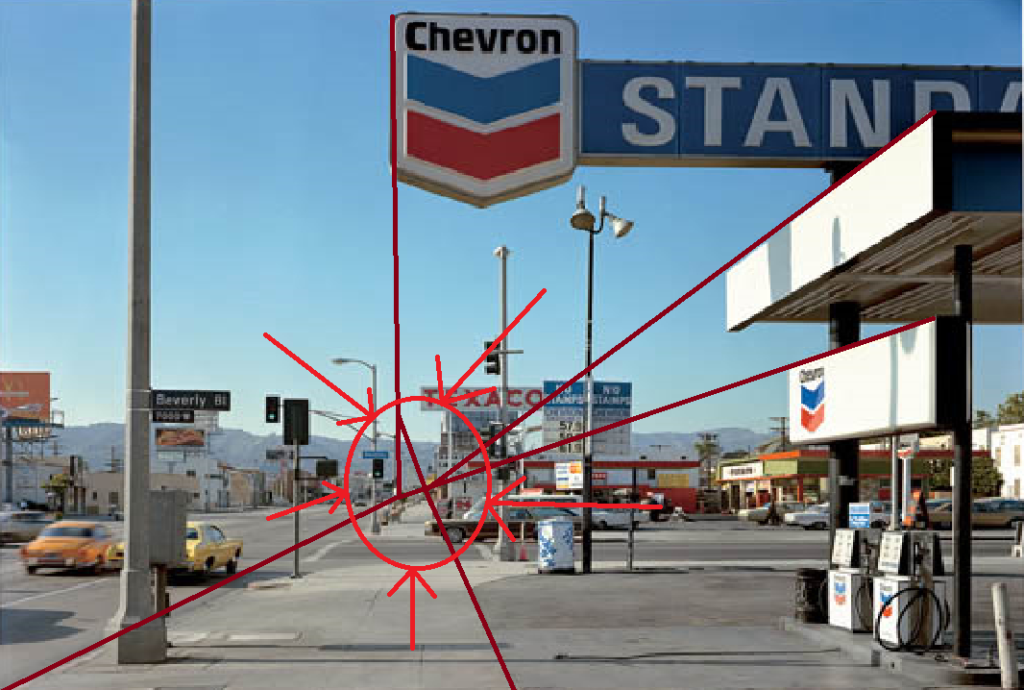
Contextual/Conceptual – The image features predominantly the colours red white and blue, linking to the American flag which when considering the lines pointing off towards the horizon creates links towards American pride for their landscapes.
Examples in Jersey
Recycling Plant – Fort Regent

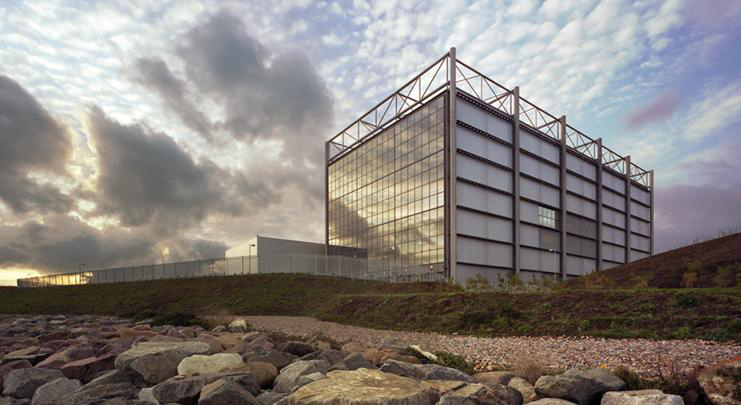
Around this area there is plenty of natural landscape (e.g. Havre des Pas), allowing for images capturing both man-made and natural landscapes for contrast.
Car Parks


Car parks are fully man-made and create a bleak atmosphere, containing mostly artificial lighting and the lack of people also adds to the uncomfortable mood.
Tunnels

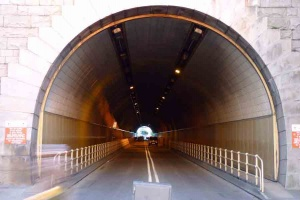
The lights along the top of tunnels create leading lines which direct attention towards the end of the tunnel, creating immersive images with a dramatic atmosphere.
